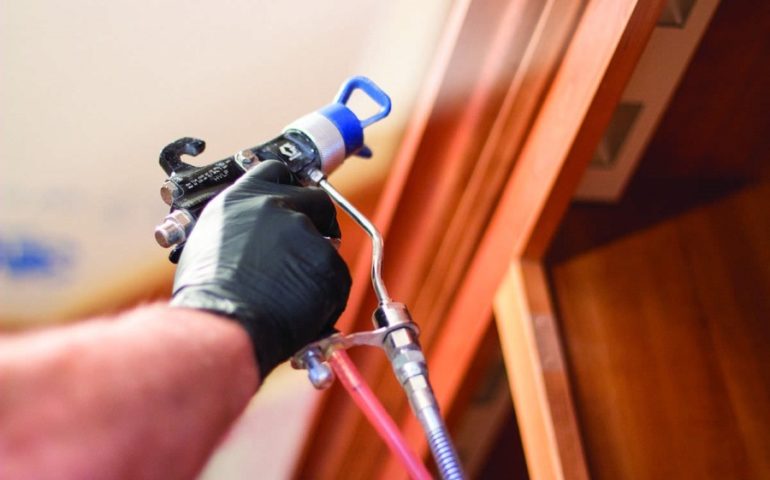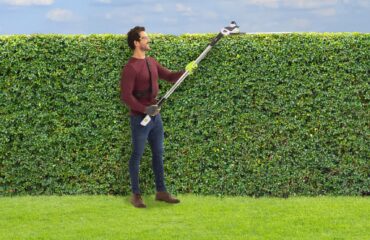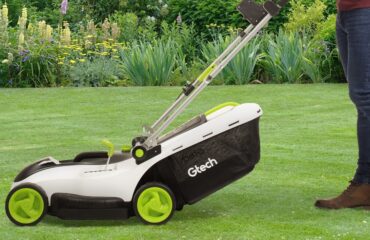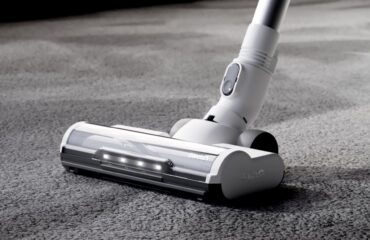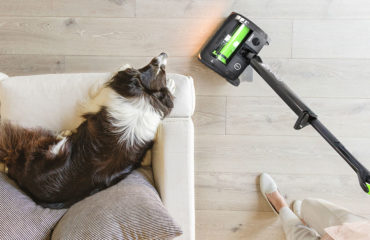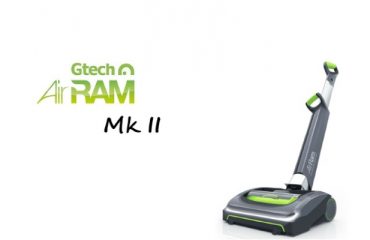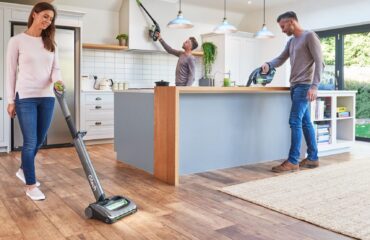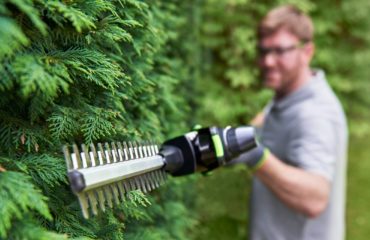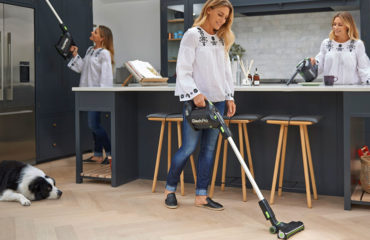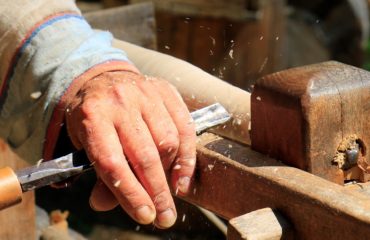Paint sprayers are a very useful power tool for DIYers. As the name suggests, they are used to spray paint on a variety of surfaces.
Depending on the model, size and attachments (nozzles), paint sprayers can cover large areas, such as a wall, or a very small detailed areas, for example moulding on a picture frame.
You can even use one to paint your garden shed.
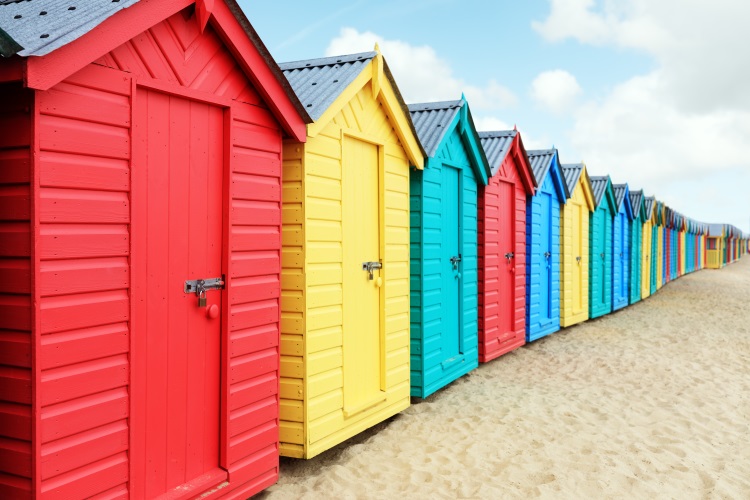
Spray paint your shed this summer
A paint sprayer is a good investment because it paints more economically than a brush or a roller can.
Also, because the paint is flowing through the sprayer at a rapid rate, the work is completed more quickly and the risk of repetitive strain injury is reduced. Trust me, your muscles will thank you!
The Two Types of Paint Sprayer
There are two main types of paint sprayer – HVLP and Airless.
HVLP paint sprayers work by pumping high volumes (HV) of air that aerosolize and propel paint at lower pressure (LP) through a narrow nozzle. This produces a fine mist that provides even coverage on the first coat. The final result in a smooth finish with far less wastage.
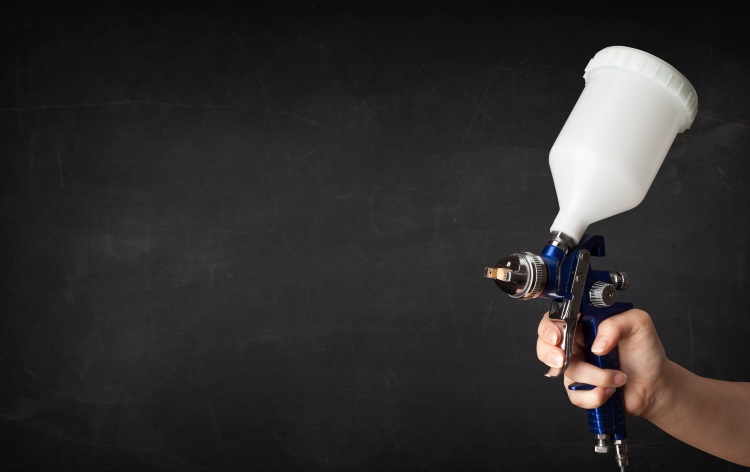
Decide on the best type of spray gun for you
It’s important to note that paint should be thinned before use in a HVLP sprayer, and you cannot use lacquers or varnishes with them. As the paint is thinned, HVLP sprayers are excellent for fine detail work.
By contrast, airless paint sprayers are better for large areas because they can be attached directly to a paint can or container.
Airless sprayers have a piston which pressurises the paint to push it through the nozzle. Unfortunately, because airless sprayers use a large quantity of paint in one go, it has been estimated that they lose 20 to 40% more paint than HVLP models. They do however work with thick paints and varnishes.
Features of a good paint sprayer
When renting or purchasing a paint sprayer, you should look out for the following features:
Powerful turbine with high wattage
The more powerful the turbine, the more efficiently the paint sprayer will work. I.e. powerful turbines push more paint through the nozzle leading to better coverage overall.
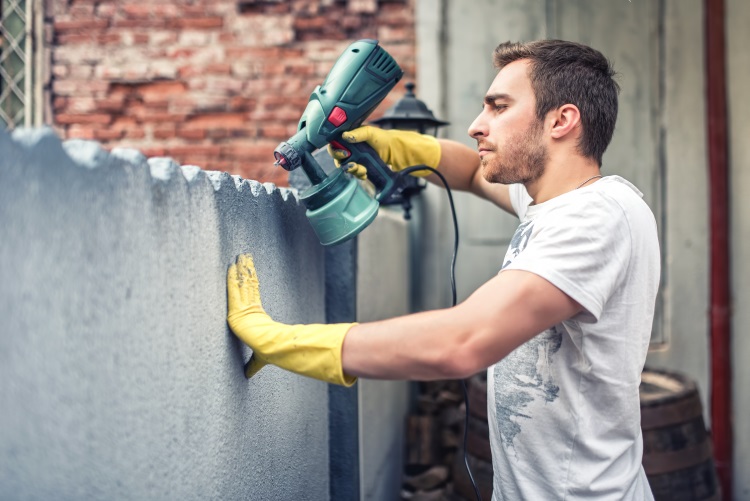
Choose a gun suitable for your job
Choice of nozzles
The best paint sprayers come with a choice of nozzles which are easily interchangeable depending on the size of the area that you need to cover.
Insulated handle
Like most electrical equipment, paint sprayers can get very hot. For your safety, choose one with a well insulated handle to avoid discomfort or potential burns to your hands.
Lightweight
Paint sprayers are handheld and can get heavy. To stop arm ache or injury, choose one that is reasonably small and lightweight.
Remember, if you are using a HVLP paint sprayer, the smaller the sprayer, the smaller the chamber for the paint. A small chamber results in frequent refills, which you’ll find is a real pain when you get into a rhythm.
How to use a paint sprayer
Here is a quick overview on how to use a paint sprayer.
First of all, prepare the area by covering with dust sheets and masking tape anything that you do not want to get paint on.
The paint can spray a wide area and it’s difficult to control, so covering furniture and masking up walls is essential. For more tips on preventing mess when you paint, check out these 27 mess-free painting tips.
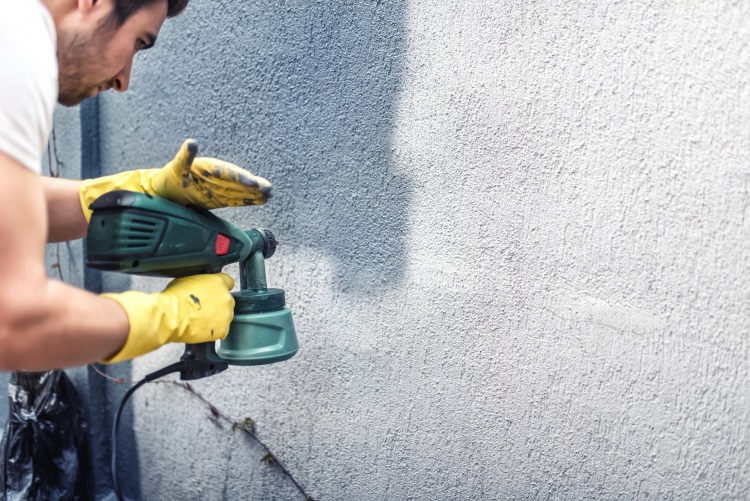
Cover the area as paint can go everywhere
If using a HVLP paint sprayer, remember to thin the paint so that it won’t clog the nozzle. Fill up the sprayer container, or, if using an airless sprayer, connect the sprayer to the paint container using the tube provided.
Spray test an area first to make sure that the coverage is to your liking. Next, apply the first coat, keeping coverage nice and even. Let the paint dry according to the manufacturer’s instructions and recoat if necessary.
When the job is done, clean up any paint spillage and remove any protective sheets/tape.
I also found some handy tips in this post while researching for this article.
For a more in-depth look at how to use a paint sprayer, check out this guide on Property Workshop.
Final Thoughts
I hope this guide has helped illustrate the benefit of using a paint sprayer and informed your decision on what type of paint sprayer to use for your application.
We’ve looked at the difference between HVLP and Airless models and you now have a list of features to check before you rent or buy a paint sprayer.
This video is worth checking out for a little more of a visual idea of how these spray guns work:
To summarize, paint sprayers are easy to use and are more efficient, both in terms of how much paint they use and how long they take to cover an area. For DIYers who plan on doing a lot of painting, sprayers are a worthwhile investment.

